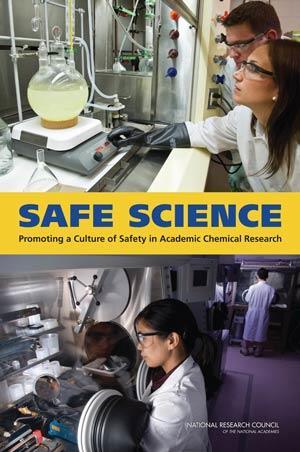National Research Council (ed)
National Academies Press
2014 | 170pp | £27
ISBN 9780309300919

The ambitious aim of Safe science: promoting a culture of safety in academic chemical research is to move chemical research in university laboratories beyond mere compliance with health and safety legislation, and towards the adoption of a more positive, proactive culture of safety.
The drive for this timely book has been a number of serious, and sometimes fatal, accidents in US university chemistry labs. Crucially, investigations into these incidents have gone well beyond considering not just the actions of front-line researchers (often seen as the immediate cause of the accident) and identified factors in the management and leadership of these labs, departments and universities. Lapses at both the lab bench and in a wider context are described as failures in safety culture.
Physical scientists might baulk at engaging with concepts from the social sciences such as safety culture, but I think this book puts a very strong case forward that doing so is necessary for the development of safer lab environments. Safety culture has many long definitions, but a common question catching its essence is: how do people work when they think no one is looking?
Written by three committees, representing influential voices in the chemical sector, academia and industry, with key insights from behavioural sciences, the 59 authors succeed in delivering nine concise and pertinent recommendations.
Some of these are relatively uncontentious restatements of common current practice. The book suggests, for instance, that academic leaders should actively demonstrate safety is a core value of their institutions, but it also recommends the development of a positive safety culture as a criterion for consideration during staff promotions and salary decisions. This could strike those affected as either another intrusion into academic freedoms or just plain, old common sense, depending on their personal perspective.
Probably the most useful and challenging recommendations to implement are those aimed at improving communication and collaboration on safety matters between all of those involved in an organisation. From the lab bench to board level, those working in labs should be consulted on drawing up the numerous rules and procedures, which they are expected to abide by – these documents should not just be a diktat.
Although Safe science is primarily aimed at the US university sector, clearly nowhere is immune to the type and severity of accidents that happen there. I would strongly suggest that everyone who works in a chemical lab, or has responsibility for those that do, should read this free-to-download, clearly written, short book. Safe science is relevant to almost every level within an organisation – from vice chancellors through to department heads and principal investigators to front line lab researchers. Read this book and reflect on how well your labs compare with the authors’ recommendations.
Purchase Safe science: promoting a culture of safety in academic chemical research from Amazon.co.uk












No comments yet